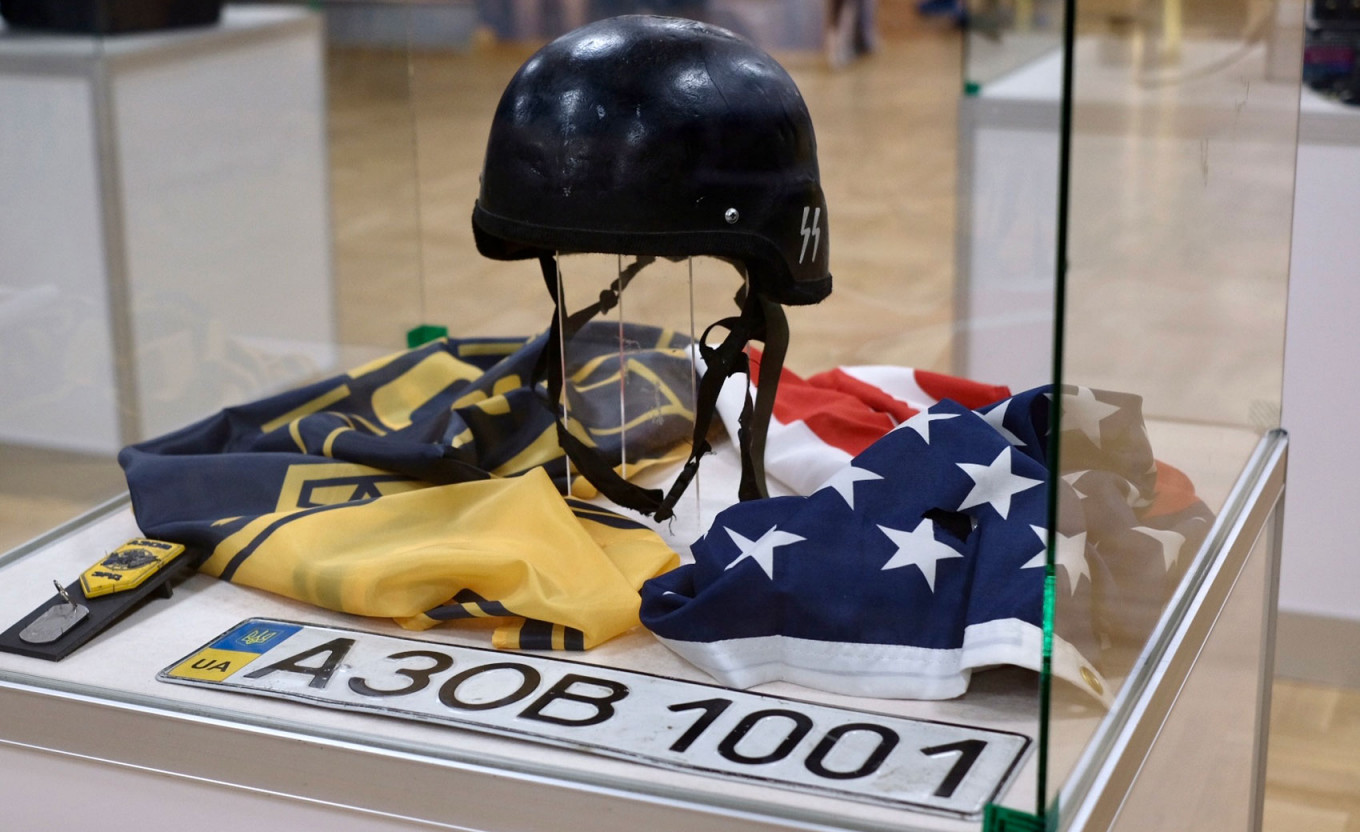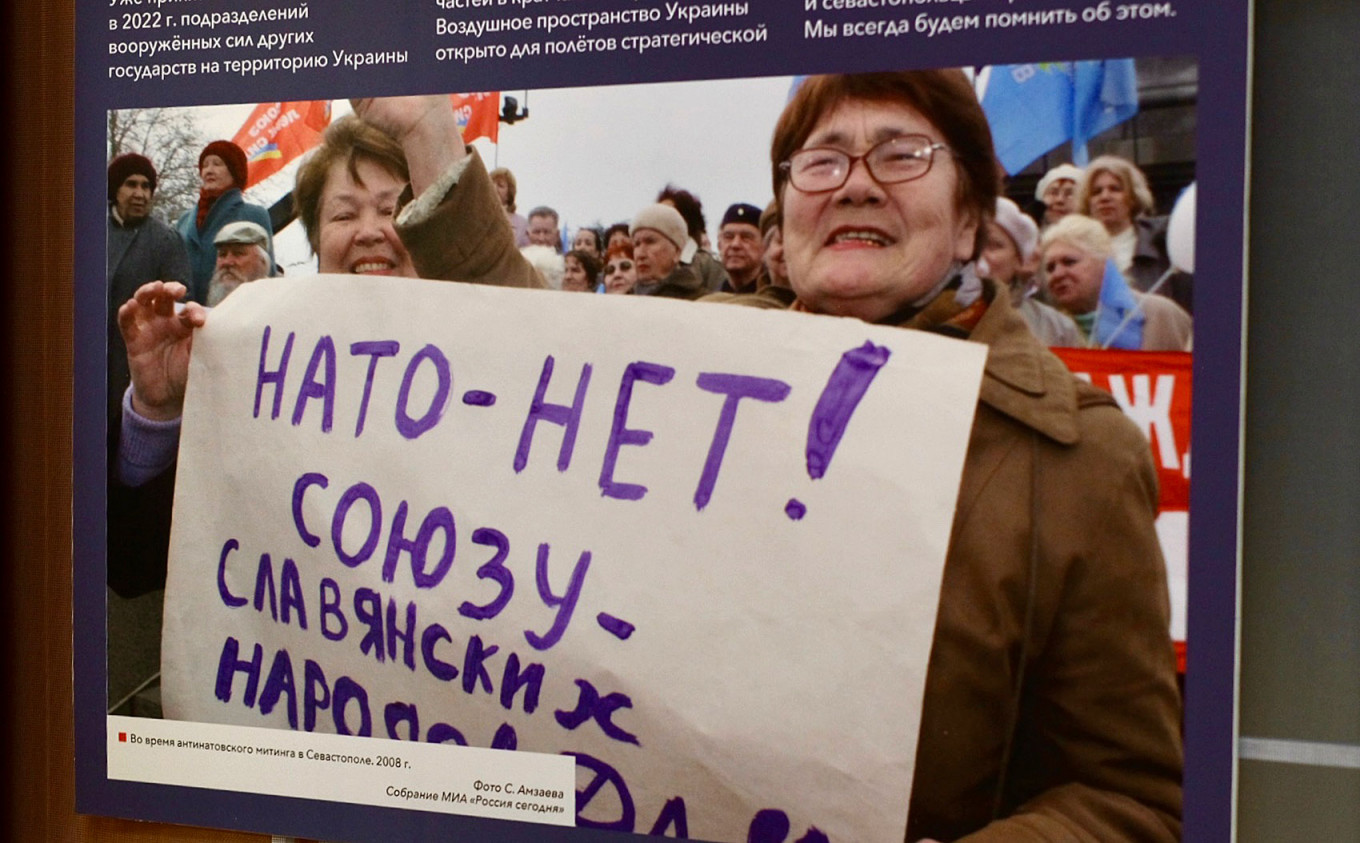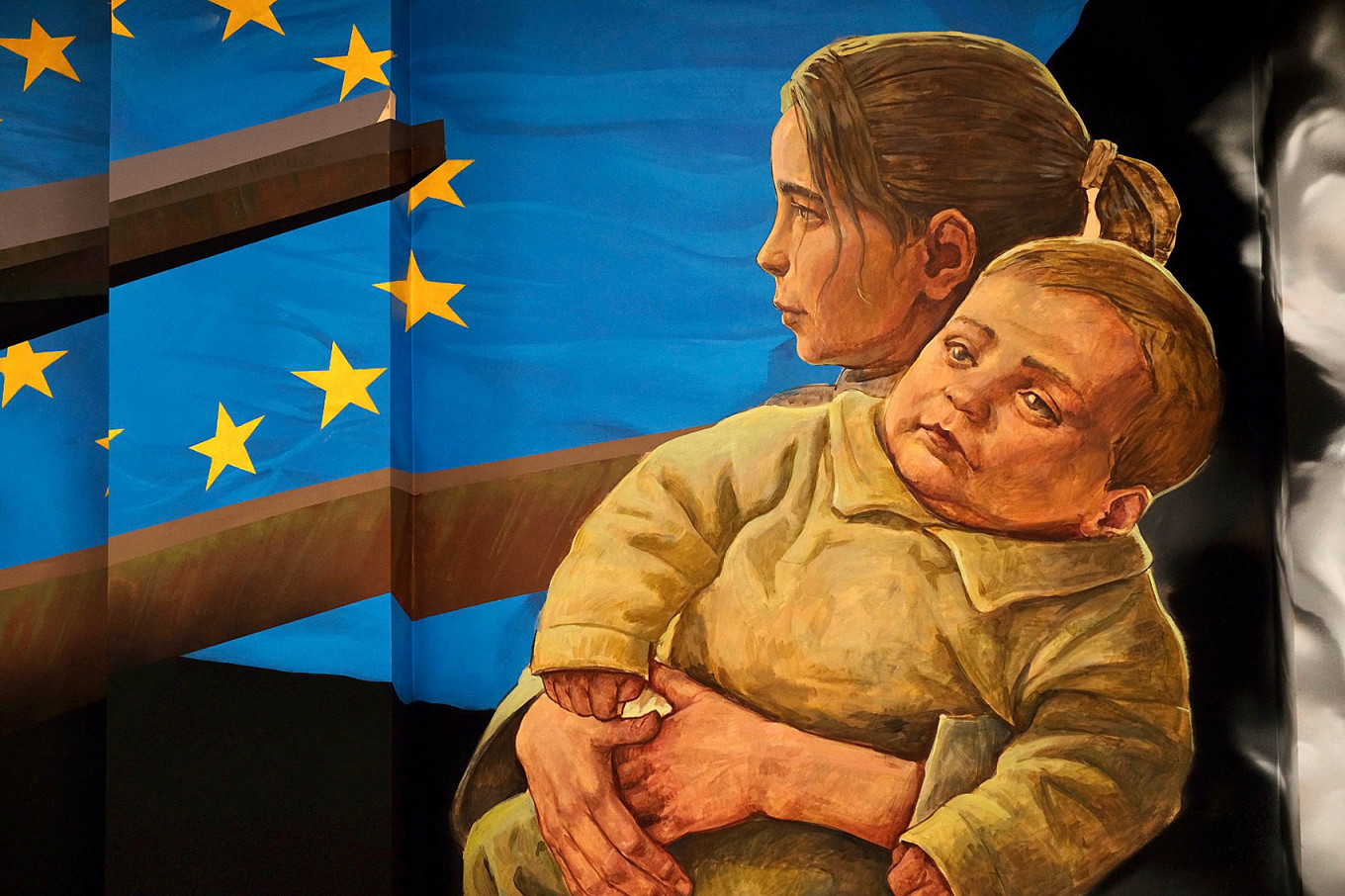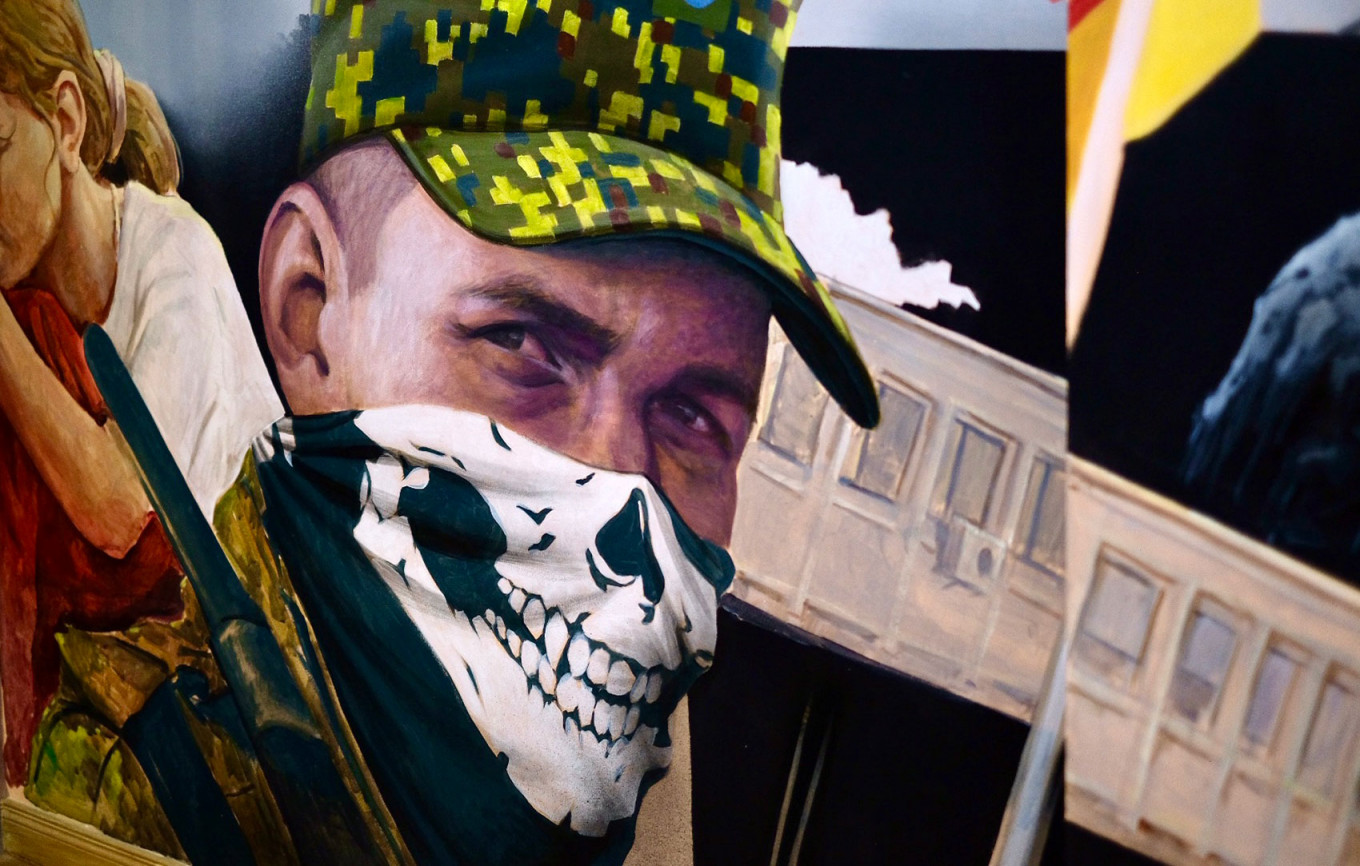At one of Moscow’s newest museum exhibitions, visitors are greeted with posters describing how “NATO is fraught with war” and images of people injured in U.S. bombings as the sound of approaching war planes wails from loudspeakers.
“NATO: A chronicle of cruelty” opened its doors in Moscow’s Museum of Contemporary Russian History last month, a few weeks after Russia attacked Ukraine.
The exhibition, and a growing number of similar ones across the country, are among the many ways Russia is justifying its invasion of Ukraine — which it increasingly casts as an existential battle against the West — to the Russian public.
“It shows only one side of the history,” said Alexandra, a young Muscovite who was looking at the displays during a recent visit by The Moscow Times.

“A lot of things purposely lead you to a certain emotional reaction. You can’t find a full picture here. It’s just a facade,” said Alexandra, who requested anonymity to speak freely.
Similar exhibitions – although lacking the exhibits on display in Moscow – have appeared across Russia in recent weeks: from Siberia and the Far East island of Sakhalin to the western cities of Belgorod, Kursk and Bryansk near the border with Ukraine.
“This exact exhibition will soon be opened in every region of the Russian Federation,” said one official at an opening ceremony earlier this month in the city of Veliky Novgorod, 190 kilometers south of St. Petersburg.
In Moscow, displays include “trophies” that Russian soldiers have brought back from Ukraine since the Kremlin launched its invasion in late February.
At the exhibition’s center is a display containing a Ukrainian bulletproof vest, a Ukrainian military uniform and a Ukrainian insignia badge, which are described as “unique exhibits” provided by the Russian Defense Ministry.

“NATO: A chronicle of cruelty” opened its doors in Moscow’s Museum of Contemporary Russian History last month, a few weeks after Russia attacked Ukraine.
The exhibition, and a growing number of similar ones across the country, are among the many ways Russia is justifying its invasion of Ukraine — which it increasingly casts as an existential battle against the West — to the Russian public.
“It shows only one side of the history,” said Alexandra, a young Muscovite who was looking at the displays during a recent visit by The Moscow Times.
The Kremlin sees NATO as an existential threat for Russia, and cites the U.S.-led alliance’s presence in Ukraine as one of its reasons for invading.

While the exhibition primarily focuses on NATO’s military activities, including the bombing of Yugoslavia in 1999, and wars in Iraq, Afghanistan and Syria, it also devotes significant space to recent events in Ukraine and what is described on the museum’s website as Kyiv’s “cooperation with NATO.”
Russian officials have repeatedly said that they are fighting a proxy war against NATO in Ukraine, which has received significant supplies of equipment and ammunition from members of the Western military alliance in recent months.
“We must realize that NATO and a chronicle of cruelty are exactly the same thing,” Russian Senator Konstantin Kosachev said at an opening ceremony for the Moscow exhibition.
One topic stressed throughout the exhibition was NATO’s apparent long-term plans to use Ukraine as a staging ground for an attack on Russia.

“After the collapse of the Soviet Union, the United States and NATO began their shameless development of the territory of Ukraine as a theater of potential military operations,” reads one display board.
The exhibition also draws historical parallels between Nazi Germany and modern Ukraine in an apparent attempt to bolster Moscow’s widely derided and debunked narrative that Ukraine requires “denazification.”
“After World War II, one of the goals of the Nuremberg trials was to ban such ideologies, such organizations and such symbols. But look at this — Ukrainian soldiers are shamelessly decorating their helmets with Nazi symbols,” tour guide Yaroslav Polestrov told a group of visitors.
Posters depicting injured children and crying women line the walls along with photographs of anti-NATO protests. One stand shows photos of a clinic for premature babies in Belgrade, Serbia, that was overcrowded as a result of bombing by NATO, according to the accompanying description.

Another section showcases U.S.-made weapons and uniforms.
Visitors are even able to look at debris from a U.S. F-117 Nighthawk stealth aircraft that was shot down over Serbia in 1999.
For some visitors, the exhibition reinforced the official rhetoric about the evils of the West that they have been hearing since before the collapse of the Soviet Union.
“I really enjoyed the exhibition. We are an old generation, we lived through those events, and here we can see the truth,” Natalya, a pensioner, told The Moscow Times. “We need more such exhibitions so people can see what really happened.”
Others, however, were unconvinced.
Nikita, 23, said the display resembled the disinformation spread on state-owned television channels and ignored what was really going on in Russia.
“The guide gave us a lecture about Nazi criminals and World War II and then he showed us that [Ukrainian regiment] Azov helmet with Nazi signs on it. And I wanted to tell him to look around Moscow. Hasn’t he noticed the ‘Z’ and ‘V’ symbols everywhere?” Nikita said, referring to the Latin letters daubed on Russian military equipment in Ukraine that have been promoted by those who back the war.

“It’s a matter of interpretation and how these facts are presented. Some things can be taken out of context,” he added.
In an effort to boost visitor numbers, entry to all the “NATO: A chronicle of cruelty” exhibitions in Russia is free.
“Usually we have groups organized by government organizations, social centers and students from different military universities,” said guide Polestrov when asked about the most common visitors.
The Moscow exhibition has attracted almost 20,000 visitors in the less than two months it has been open, according to the museum.
At the end of their tour, visitors are invited to express their opinions in the comments book. Both positive and negative feedback can be seen — echoing the deep divisions that persist in Russia about the conflict in Ukraine.
“Thank you for the truth about NATO,” said one comment.
“It’s silly propaganda,” read another.
Leave a Reply